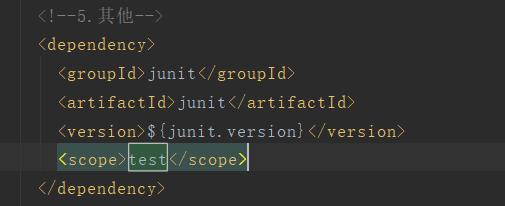java之aop使用及自定义注解
目的:
1.Java注解简介
2.Java元注解(重点)
3.自定义注解
4.Aop自定义注解的应用(重点)
Java注解简介
1. Java注解(Annotation)
Java注解是附加在代码中的一些元信息,用于一些工具在编译、
运行时进行解析和使用,起到说明、配置的功能。
注解相关类都包含在java.lang.annotation包中。
2. Java注解分类
2.1 JDK基本注解
2.2 JDK元注解
2.3 自定义注解
3. JDK基本注解
3.1 @Override
重写
3.2 @Deprecated
已过时
3.3 @SuppressWarnings(value = "unchecked")
压制编辑器警告
Java元注解
作用:元注解用于修饰其他的注解
- @Retention:定义注解的保留策略
@Retention(RetentionPolicy.SOURCE) //注解仅存在于源码中,在class字节码文件中不包含
@Retention(RetentionPolicy.CLASS) //默认的保留策略,注解会在class字节码文件中存在,但运行时无法获得,
@Retention(RetentionPolicy.RUNTIME) //注解会在class字节码文件中存在,在运行时可以通过反射获取到
@Target:指定被修饰的Annotation可以放置的位置(被修饰的目标)
@Target(ElementType.TYPE) //接口、类
@Target(ElementType.FIELD) //属性
@Target(ElementType.METHOD) //方法
@Target(ElementType.PARAMETER) //方法参数
@Target(ElementType.CONSTRUCTOR) //构造函数
@Target(ElementType.LOCAL_VARIABLE) //局部变量
@Target(ElementType.ANNOTATION_TYPE) //注解
@Target(ElementType.PACKAGE) //包
注:可以指定多个位置,例如:
@Target({ElementType.METHOD, ElementType.TYPE}),也就是此注解可以在方法和类上面使用
- @Inherited:指定被修饰的Annotation将具有继承性
@Documented:指定被修饰的该Annotation可以被javadoc工具提取成文档.
自定义注解
注解分类(根据Annotation是否包含成员变量,可以把Annotation分为两类):
标记Annotation:
没有成员变量的Annotation; 这种Annotation仅利用自身的存在与否来提供信息
元数据Annotation:
包含成员变量的Annotation; 它们可以接受(和提供)更多的元数据;
如何自定义注解?
使用@interface关键字, 其定义过程与定义接口非常类似, 需要注意的是:
Annotation的成员变量在Annotation定义中是以无参的方法形式来声明的, 其方法名和返回值类型定义了该成员变量的名字和类型,
而且我们还可以使用default关键字为这个成员变量设定默认值;
注意:只有名字为“value”属性,赋值时可以省略属性名
案例一(获取类与方法上的注解值):
TranscationModel
package com.huangting.annotation.P1;
/**
* enum枚举
*/
public enum TranscationModel {
Read, ReadWrite, Write
}
MyAnnotation1
package com.huangting.annotation.P1; import java.lang.annotation.*; /**
* MyAnnotation1注解可以用在类、接口、属性、方法上
* 注解运行期也保留
* 不可继承
*/
@Target({ElementType.TYPE, ElementType.FIELD,ElementType.METHOD})
@Retention(RetentionPolicy.RUNTIME)
@Documented
public @interface MyAnnotation1 {
String name();
}
MyAnnotation2
package com.huangting.annotation.P1; import java.lang.annotation.*; /**
* MyAnnotation2注解可以用在方法上
* 注解运行期也保留
* 不可继承
*/
@Target(ElementType.METHOD)
@Retention(RetentionPolicy.RUNTIME)
@Documented
public @interface MyAnnotation2 {
TranscationModel model() default TranscationModel.ReadWrite;
}
MyAnnotation3
package com.huangting.annotation.P1; import java.lang.annotation.*; /**
* MyAnnotation3注解可以用在方法上
* 注解运行期也保留
* 可继承
*/
@Target(ElementType.METHOD)
@Retention(RetentionPolicy.RUNTIME)
@Inherited
@Documented
public @interface MyAnnotation3 {
TranscationModel[] models() default TranscationModel.ReadWrite;
}
Dome1
package com.huangting.annotation.P1; /**
* 获取类与方法上的注解值
*/
@MyAnnotation1(name = "abc")
public class Demo1 { @MyAnnotation1(name = "xyz")
private Integer age; @MyAnnotation2(model = TranscationModel.Read)
public void list() {
System.out.println("list");
} @MyAnnotation3(models = {TranscationModel.Read, TranscationModel.Write})
public void edit() {
System.out.println("edit");
}
}
Demo1Test
package com.huangting.annotation.P1;
import org.junit.Test;
public class Demo1Test {
@Test
public void list() throws Exception {
// 获取类上的注解
MyAnnotation1 annotation1 = Demo1.class.getAnnotation(MyAnnotation1.class);
System.out.println(annotation1.name());//abc // 获取方法上的注解
MyAnnotation2 myAnnotation2 = Demo1.class.getMethod("list").getAnnotation(MyAnnotation2.class);
System.out.println(myAnnotation2.model());//Read
} @Test
public void edit() throws Exception {
MyAnnotation3 myAnnotation3 = Demo1.class.getMethod("edit").getAnnotation(MyAnnotation3.class);
for (TranscationModel model : myAnnotation3.models()) {
System.out.println(model);//Read,Write
}
}
}
效果:

注意:
jar包的运用中最好不要出现test,把《scope》《/scope》删除即可

否则会报错@Test无法使用

案例二(获取类属性上的注解属性值)
TestAnnotation
package com.huangting.annotation.P2; import java.lang.annotation.ElementType;
import java.lang.annotation.Retention;
import java.lang.annotation.RetentionPolicy;
import java.lang.annotation.Target; //@Retention(RetentionPolicy.SOURCE)
@Retention(RetentionPolicy.RUNTIME)
@Target(ElementType.FIELD)
public @interface TestAnnotation {
String value() default "默认value值";
String what() default "这里是默认的what属性对应的值";
}
Dome2
package com.huangting.annotation.P2; /**
* 获取类属性上的注解属性值
*/
public class Demo2 {
@TestAnnotation(value = "这就是value对应的值_msg1", what = "这就是what对应的值_msg1")
private static String msg1; @TestAnnotation("这就是value对应的值1")
private static String msg2; @TestAnnotation(value = "这就是value对应的值2")
private static String msg3; @TestAnnotation(what = "这就是what对应的值")
private static String msg4;
}
Demo2Test
package com.huangting.annotation.P2;
import org.junit.Test;
public class Demo2Test {
@Test
public void test1() throws Exception {
TestAnnotation msg1 = Demo2.class.getDeclaredField("msg1").getAnnotation(TestAnnotation.class);
System.out.println(msg1.value());
System.out.println(msg1.what());
}
@Test
public void test2() throws Exception{
TestAnnotation msg2 = Demo2.class.getDeclaredField("msg2").getAnnotation(TestAnnotation.class);
System.out.println(msg2.value());
System.out.println(msg2.what());
}
@Test
public void test3() throws Exception{
TestAnnotation msg3 = Demo2.class.getDeclaredField("msg3").getAnnotation(TestAnnotation.class);
System.out.println(msg3.value());
System.out.println(msg3.what());
}
@Test
public void test4() throws Exception{
TestAnnotation msg4 = Demo2.class.getDeclaredField("msg4").getAnnotation(TestAnnotation.class);
System.out.println(msg4.value());
System.out.println(msg4.what());
}
}
效果:

案例三(获取参数修饰注解对应的属性值):
IsNotNull
package com.huangting.annotation.P3; import java.lang.annotation.*; /**
* 非空注解:使用在方法的参数上,false表示此参数可以为空,true不能为空
*/
@Documented
@Target({ElementType.PARAMETER})
@Retention(RetentionPolicy.RUNTIME)
public @interface IsNotNull {
boolean value() default false;
}
Demo3
package com.huangting.annotation.P3; /**
* 获取参数修饰注解对应的属性值
*/
public class Demo3 { public void hello1(@IsNotNull(true) String name) {
System.out.println("hello:" + name);
} public void hello2(@IsNotNull String name) {
System.out.println("hello:" + name);
}
}
Demo3Test
package com.huangting.annotation.P3;
import org.junit.Test;
import java.lang.reflect.Parameter;
public class Demo3Test { @Test
public void hello1() throws Exception {
Demo3 demo3 = new Demo3();
for (Parameter parameter : demo3.getClass().getMethod("hello1", String.class).getParameters()) {
IsNotNull annotation = parameter.getAnnotation(IsNotNull.class);
if(annotation != null){
System.out.println(annotation.value());//true
}
}
} @Test
public void hello2() throws Exception {
Demo3 demo3 = new Demo3();
for (Parameter parameter : demo3.getClass().getMethod("hello2", String.class).getParameters()) {
IsNotNull annotation = parameter.getAnnotation(IsNotNull.class);
if(annotation != null){
System.out.println(annotation.value());//false
}
}
}
}
效果:

Aop自定义注解的应用
MyLog
package com.huangting.annotation.Aop; import java.lang.annotation.ElementType;
import java.lang.annotation.Retention;
import java.lang.annotation.RetentionPolicy;
import java.lang.annotation.Target; @Target(ElementType.METHOD)
@Retention(RetentionPolicy.RUNTIME)
public @interface MyLog {
String desc();
}
MyLogAspect
package com.huangting.annotation.Aop;
import org.aspectj.lang.JoinPoint;
import org.aspectj.lang.annotation.Aspect;
import org.aspectj.lang.annotation.Before;
import org.aspectj.lang.annotation.Pointcut;
import org.aspectj.lang.reflect.MethodSignature;
import org.slf4j.Logger;
import org.slf4j.LoggerFactory;
import org.springframework.stereotype.Component; @Component
@Aspect
public class MyLogAspect {
private static final Logger logger = LoggerFactory.getLogger(MyLogAspect.class); /**
* 只要用到了com.huangting.annotation.Aop.MyLog这个注解的,就是目标类
*/
@Pointcut("@annotation(com.huangting.annotation.Aop.MyLog)")
private void MyValid() {
} @Before("MyValid()")
public void before(JoinPoint joinPoint) {
MethodSignature signature = (MethodSignature) joinPoint.getSignature();
MyLog myLog = signature.getMethod().getAnnotation(MyLog.class);
System.out.println("[" + signature.getName() + " : start.....]");
System.out.println("【目标对象方法被调用时候产生的日志,记录到日志表中】:"+myLog.desc());
}
}
BaseTestCase
package com.huangting.annotation.Aop; import org.junit.runner.RunWith;
import org.springframework.test.context.ContextConfiguration;
import org.springframework.test.context.junit4.SpringJUnit4ClassRunner; @RunWith(SpringJUnit4ClassRunner.class)
@ContextConfiguration(locations={"classpath:applicationContext.xml"})
public class BaseTestCase { }
LogController
package com.huangting.annotation.Aop; import org.springframework.stereotype.Component; @Component
public class LogController { @MyLog(desc = "这是结合spring aop知识,讲解自定义注解应用的一个案例")
public void testLogAspect(){
System.out.println("墙头马上遥相顾");
}
}
LogControllerTest
package com.huangting.annotation.Aop; import org.junit.Test;
import org.springframework.beans.factory.annotation.Autowired; public class LogControllerTest extends BaseTestCase {
@Autowired
private LogController logController; @Test
public void testLogAspect(){
logController.testLogAspect();
}
}
效果:

谢谢观看!
最新文章
- UVALive 2453 Wall (凸包)
- Android中 Bitmap和Drawable相互转换的方法
- C#学习系列-out与ref的区别
- 2016 - 1 - 23 json转模型 常用的第三方框架
- Careercup - Facebook面试题 - 6139456847347712
- 1069: [SCOI2007]最大土地面积 - BZOJ
- 网页插入QQ 无需加好友
- SZU:G32 Mass fraction
- C# .NET更智能的数据库操作的封装完整版(重构)
- 【django基础】
- nginx1.14.0版本server、location、rewrite配置
- WPF 耗时操作时,加载loging 动画 (BackgroundWorker 使用方法)
- SpringDataJPA与Mybatis的优异性
- docker 使用指南
- Linux Oracle bash: “sqlplus / as sysdba”: command not found 解决方法
- 关于.net里面的静态html页面和接口组合使用的网站
- android 获取文本框回车输入
- 让WebService支持Get请求
- 深入解密.NET(Tuple元祖)
- 进程状态TASK_UNINTERRUPTIBLE